March 2009 (Part 3)
SELECTION OF QUESTIONS AND ANSWERS
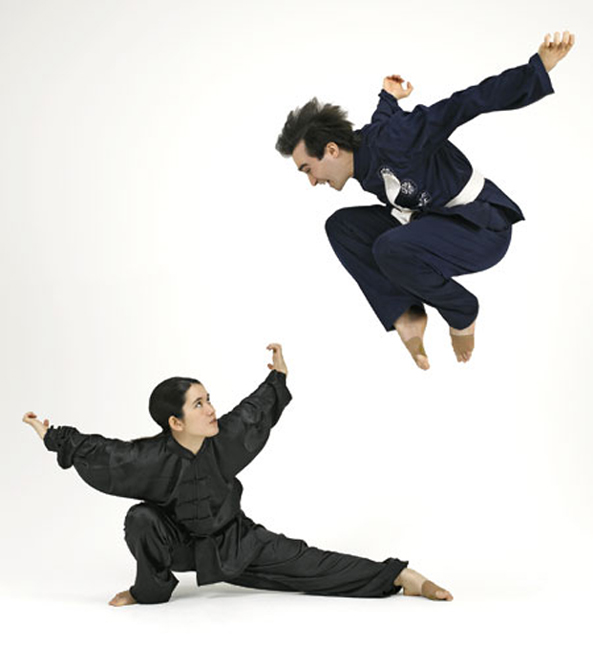
Question 1
Recently I found your book in a store among many other books and it stuck out to me for reasons I do not know. When I opened it, I found it to be one of the best and most informative books I've ever read (on any subject).
— Philip, Belgium
Answer
Thank you for your kind comments. When I wrote my books, I kept in mind two important points.
- Readers must enjoy reading my books, even if they might not be interested in the subject I was presenting
- Readers will derive benefits from reading them.
Question 2
I began studying wushu about five years ago. I had some instruction off and on as a kid, but I was too far behind and too young to practice with the class.
Answer
“Wushu” and “kungfu” are two of many Chinese terms for martial art. “Kungfu” is coloquial and is used more by Chinese living outside China. It is also generally used by Westerners to mean Chinese martial art. In China itself, “wushu” is popularly used; “kungfu” is uncommon.
When the present Chinese government first ruled China, practicing any traditional arts, like wushu (or kungfu), chi kung, meditation, painting, music and poetry, was considered bourgeois, and therefore discouraged, even prohibited. But there was a change of policy in the 1970s. The government brought back wushu, but it was transformed.
In the past, there were many styles of Chinese martial art, like Shaolin, Taijiquan, Bagua, Praying Mantis, Eagle Claw, Hoong Ka, Choy-Li-Fatt and Wing Choon. But the Chinese government put all these styles together into just one style which was (and still is) just called “wushu”. There were, and still are, seven categrois of wushu as follows:
- Changquan, or Long Fist, which is mainly Northern Shaolin Kungfu.
- Namquan, or Southern Fist, which is mainly Southern Shaolin Kungfu.
- Taijiquan, or Tai Chi Chuan, which was mainly Yang Style Tai Chi Chuan, but later it was modified to be more of Chen Style.
- Daoshu, or Sabre Techniquee, which is mainly Northern Shaolin Sabre.
- Jianshu, or Sword Techniques, which is mainly Northern Shaolin Sword.
- Gunshu, or Staff Techniques, which is mainly Northern Shaolin Staff.
- Jiangshu, or Spear Techniques, which is mainly Northern Shaolin Spear.
With this important development, officially there were no more Northern Shaolin, Southern Shaolin, Praying Mantis, Eagle Claw, Wing Choon, Bagua, Hsing Yi, Pa Mei, Wudang, and so on. There was only wushu. Initially, a very small number of traditionalists still carried on practicing the traditional styles outside of the seven wushu categories, but eventually they faded out.
What was more significant was that wushu was promoted not as a martial art but as a sport. There was no internal force training and no combat application, the two hallmarks of great traditional Chinese martial arts.
Nevertheless, the Chinese government continued to be more and more liberal. With the opening of China to the world, a truly wonderful development, many traditional kungfu styles were revived. But by this time much of the essence of these traditional kungfu styles was already lost. Because of the parallel development of chi kung during the same period, many masters of traditional styles still have tremendous internal force, but very few practitioners, including masters, could apply their traditional martial art forms for combat. As a result, their sanda, which actually means free sparring, consists of Boxing and Kick-Boxing.
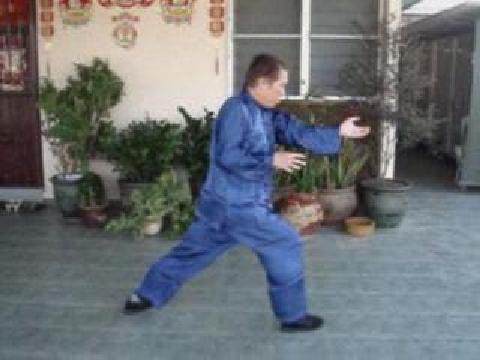
Question 3
My friend and sifu moved to China for almost a decade to travel the north from temple to temple staying on Wudang and other places for months or years at a time. He returned when I was about twenty, and instructed me for a few hours everyday on philosophy, meditation, history of Gung Fu, and Tai Chi and Ba Gua and some Jeet Kune Do..
Answer
When Westerners went to China in this modern period, in the 1980s, 1990s and 2000s, to learn kungfu, what they learned was not the kungfu they had in mind that set them on their search, but modern wushu which was practiced as a sport with no internal force training and combat application. The brief historical background I have mentioned above will make this situation clear.
Question 4
His number 1 student took over my training and insisted that practicing Jeet Kune Do would improve my Tai Chi and make me understand it better.
Answer
Jeet Kune Do and Tai Chi Chuan have diagonally opposite philosophy and methodology. Indeed, they represent the two extreme ends of a range of martial arts. Jeet Kune Do is modern, external and geared towards physical fighting. Tai Chi Chuan — the genuine art, not its modernized dance — is traditional, internal and geared towards spiritual cultivation.
In fact, the inventing of Jeet Kune Do by Bruce Lee was a reaction to what he thought was lacking in traditional kungfu. Although he defeated a kungfu master in a fight using his Wing Choon Kungfu, he was deeply disappointed because he took too long to beat his opponent, and it was not as convincing a victory as he would like it to be.
After much thought, Bruce Lee concluded that his footwork was too slow and his attack was lacking in kicks. So he discarded kungfu stances and incorporated Taekwondo kicks to invent Jeet Kune Do. His force training methods were mechanical and external, like skipping, jogging, push-ups, conditioning with mechanical aids and weight-lifting. His main aim was combat efficiency, paying little attention to health and spiritual cultivation.
Tai Chi Chuan is reversed. Stances are very important in Tai Chi Chuan, while Taekwondo types of kicks are absent. While combat efficiency is important, health and spiritual cultivation are more important. The training is such that a Jeet Kune Do practitioners would sacrifice health and spiritual development to achieve his combative purposes — often without his conscious knowing, but a Tai Chi Chuan practitioner would not.
For example, to be more combat efficient, a Jeet Kune Do practitioner would tense his muscles, grimaces and screams as he attacks. Tensing his muscles blocks energy flow, and therefore is bad for his health. Grimacing and screaming affects his temperament, and are therefore bad for spiritual cultication. The Jeet Kune Do practitioner may not know such philosophical details, he just do so as this is part of his training.
When a Tai Chi Chuan practitioner attacks, he relaxes his muscles and remains calm and composed. Relaxing his muscles facilitates energy flow which not only increases his internal force but also contribute to his health. Remaining calm and composed even in combat situations contribute to spiritual development. The Tai Chi Chuan practitioner may or may not know these philosophical details, but he would do so because this is how he has been trained.
Hence, if you excel in Jeet Kund Do, you will distract from your Tai Chi Chuan progress, and vice versa.
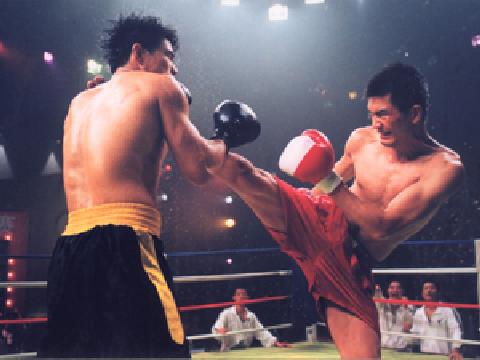
Most kungfu schools today use Kick-Boxing or other martial techniques in sparring, although they may still teach traditional kungfu forms in solo practice. The picture which shows a typical sparring match amongst practitioners of Chinese martial arts is taken from http://www.chinashaolinkungfu.com/ma_Sanda.html
Question 5
There is so much out there in the world of martial arts and he recently sent me out on my own to figure out for myself what to learn next (though it should be Gung fu, coming from his background)
Answer
I don't mean to be offensive but I would like to warn sincere seekers that a lot of martial art material out there in the world today is misleading or incorrect.
For example, Wing Choon practitioners having big muscles is misleading. It may misleadingly imply that having muscular strength is necessary for combat efficiency in Wing Choon or any style of kungfu. Shaolin practitioners sparring like Boxers is incorrect. Without safety rules, fighting as Boxers do will dangerously expose the Shaolin practitioners in combat.
In principle, your instructor asking you to go out into the world to figure out what to learn next, is like asking you to re-invent the wheels when you can just buy a car.
I do not mean to belittle your instructor. Honestly, I think he is a nice person and has your interest at heart. What I want to show is the pathetic situaion of kungfu today where the level of instructors available is generally low.
Any instructor should be well trained and properly qualified so that not only his teaching will benefit his students but also he is in a position to give useful advice to guide his students.
An instructor may have good intentions in asking his students to find out for themselves in the real world, but without proper guidance the students are likely to waste a lot of time. Worse, they may harm themselves by getting involved in wrong arts. This, in fact, is quite common. Today many martial artists are less healthy physically and psychologically after many years of training than before they started their training!
Question 6
Your book is fantastic and I understand much of the theory, but having no experience with traditional Gung Fu, I don't know exactly how to perform the 12 hand techniques and the three steps, Unicorn, Cat and Ring (though I might know Ring but we might call it Cross-Step)
Answer
Doesn't it strike you as odd that despite your sifu having spent almost a decade traveling from temple to temple studying wushu, and you having learnt from him, even on and off, you still do not know how to perform basic kungfu or wushu hand-forms and stances. Traditional kungfu forms and modernized wushu forms are the same. It is how they are practiced and used that is different.
Modernized wushu practitioners use the forms for demonstration. Genuine traditional kungfu practitioners use the same forms to attain good health, combat efficiency and spiritual development.
One may not perform the forms well, but he still should be able to perform them by following the instructions and illustrations in my books. Some of my students first learned kungfu from my books. Then they attended my Intensive Shaolin Kungfu Course. On returning home, some have practiced so well that they later became instructors.
In our school, we do not call them “Cat Stance” and “Ring Stance”. We call them “False-Leg Stance” and “Unicorn Step”. What you call the “Ring” is our “Unicorn Step”, or “Unicorn Stance” if one remains at the stance for some time. In your question, you mention three steps or stances, but you have stated only two, namely “Unicorn” which is also called “Ring”, and “Cat”. What the third stance or step is, is not mentioned. Do you mean the Bow-Arrow Stance, which is also called the “Forward Step” in some schools?
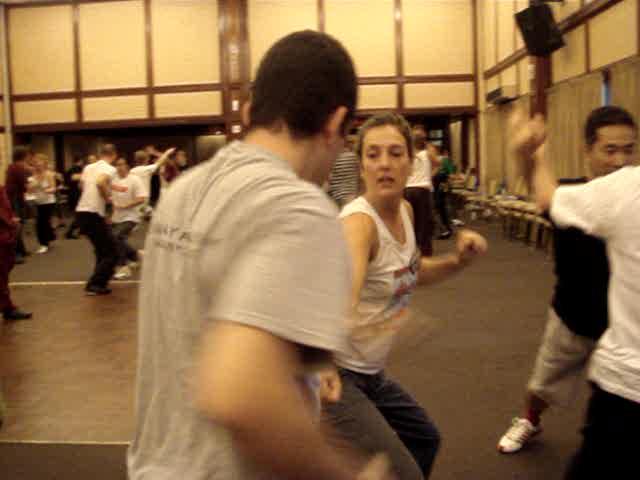
Schools that use traditional kungfu forms in sparring are very rare today. Our school is one of them. Here participants at a Shaolin Kungfu review courses use traditional kungfu forms in their sparring.
Question 7
I have searched for a book written by you detailing these particular things but have not found one. Though, my friend, the number 1 student, can help me with some things he doesn't know much about the Shaolin system, and doesn't want me mixing styles just yet. If there are any detailed writings on these steps and strikes, could you please direct me to where I might find them?
Answer
I have written three books on Shaolin Kungfu, namely “Introduction to Shaolin Kung Fu”, “The Art of Shaolin Kungfu” and “The Complete Book of Shaolin”. Many readers have kindly told me that they are amongst the best they have ever read.
But the stances in Shaolin are also found in all other kungfu styles. Although there are more strikes in Shaolin than in any other martial art, the basic strikes are also found in other kungfu styles. You don't even know the basics, so don't worry unnecessaryily about the detials and specialized strikes.
You are wasting your time on searching for detailed writings on Shaolin steps and strikes and other advanced aspects of Shaolin Kungfu. It is like someone who does not know how to walk, but attempts to study what chemical reactions and muscular movements are involved while walking. He may know a lot of theoretical information, but is still unable to walk.
If you wish to eat ice-cream, you go to an ice-cream stall, buy some ice-cream and enjoying eating it. You don't go to a library and read up about ice-cream, or go to a cafe and drink coffee, or go to a cake shop and eat pastries.
Similarly, if you wish to learn the type of Shaolin Kungfu we teach, with emphasis on combat efficiency, good health and spiritual cultivation, you come to one of the many branches of our school, pay your fees as a student and enjoy practising the type of Shaolin Kungfu you desire to learn. You don't just read about Shaolin Kungfu, or go out there in the whole wide world to search amongst the myraid other kungfu and martial art schools.
But if you do not like the type of Shaolin Kungfu we teach, if you like, for example, to learn kungfu forms but use Kick-Boxing for sparring or take part in competitions to win thropies, then ours is not the school you should go to. You should then learn from schools that teach the type of art you like. This is being wise and cost-effective.
Question 8
I am devoting my life to Gung Fu and am about to begin when I've finished learning Western medicine. My formal study is to be a doctor of Chinese medicine, and Gung Fu is deeply linked with Chinese medicine. I just want to do the best I can in everything I do and help people in general.
Answer
Doing the best in everything we do, and helping people in general are two of the values we cherish in our school, Shaolin Wahnam.
As you intend to devote yourself to kungfu, it is only wise to find out what kungfu ideally is. This is one way to ensure that you can have the best result in your kungfu training. Next, you should practice the ideal, or at least the best available you can get.
Due to various reasons, much of kungfu taught in the world today is far from ideal. Ideally, a kungfu practitioner is combat efficient, enjoys good health, has zest for work and play, and is normally calm, peaceful and happy.
For convenience kungfu as it is practiced today may be classified into the following six categories:
- Modernized wushu forms for demonstration. This is the largest group but is mainly focused in China though it is also practiced in many parts of the world. It is highly acrobatic and majestic to watch, but its practitioners do not develop internal force or practice combat application.
- Traditional kungfu forms for demonstration. This is the second largest group, and is mainly found outside China. It is not as acrobatic as wushu, but its performance is also elegant to watch. However, its practitioners do not develop internal force or practice combat application.
- Traditional kungfu or modernized wushu forms in solo practice but use Kick-Boxing or other martial arts for sparring. This is the thrid largest group, and is found both outside as well as in China. Those outside China use traditional kungfu forms, those in China use modernized wushu forms, but both use Kick-Boxing or other martial arts for combat.
- Traditional kungfu forms in solo practice as well as in sparring with emphasis on external force training. In the past this was the category most kungfu practitioners would be in. But today as most kungfu practitioners cannot apply their kungfu for combat, this has become a small group.
- Traditional kungfu forms in solo practice as well as in sparring with emphasis on internal force training. In the past this was the category of advanced practitioners. Only after many years of dedicated training, would students have a chance to learn internal force.
- Traditional kungfu forms in solo practice as well as in sparring, with emphasis on spiritual cultivation. Even in the past this was the elite group. Not many people had the chance to learn this type of kungfu.
Categories 1 and 2 above are, strictly speaking, not kungfu. It is what past masters refered to as “flowery fists and embroidery kicks”, good for demonstration but ineffective for combat.
Category 3 is a modern phenomenon. In my opinion it is not genuine kungfu because its practitioners cannot use kungfu for combat, though they may be good fighters using other martial arts.
Categories 4, 5 and 6 are genuine kungfu. Category 4 is mediocre kungfu, Category 5 is good kungfu, and Category 6 is the best kungfu.
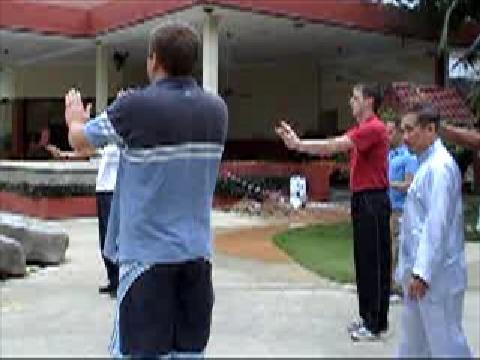
“Pushing Mountain” is an excellent exercise for strengthening the kidneys, which will result in, amongst other benefits, enhancing sexual performance and enjoyment. Here participants at an Intensive Chi Kung Course practice “Pushing Mountain”.
Question 9
I will spend hours in the horse stance and learn the basic I have asked you about until I have great force.
Answer
We in Shaolin Wahnam consider spending hours in the horse stance but getting little or no benefits, “water-buffalo” training. In smart training, you spend much less time, and derive much more benefits.
It may be difficult for many people to believe, but it is true that a smart student using a smart method taught by a good teacher can get more benefits, especially in internal force and mental clarity, training the horse stance in 5 minutes than a water-bufalo student training the horse stance in an hour using a water-bufalo method taught by an incompetnet teacher.
Practicing kungfu is to enrich our life and the lives of other people. It is not to enslave yourself. If you were to spend hours practicing the horse stance, which is just one aspect of kungfu training, where would you have the time for other worthy activities liking spending time with your parents, going out with your girlfriend, socializing with your friends, improving your work as well as merely listening to whispering breeze.
Question 10
I've recently started practice Qi Gong, based on Wong Kiew Kit's book for beginners. I would like to ask if there are some exercises which could solve my problem with not long lasting sexual intercourse.
— Thomas, USA
Answer
Any chi kung exercises can enhance sexual endurance. “Endurance” here of course does not mean the ability to endure or to stand hardship, but the ability to last long, usually with much pleasure. But some chi kung exercises are specially effective for this purpose.
Some people who are used to think that the kidney are just a pair of water-bags, may be surprised to learn that in Chinese medical philosophy the kidneys are the main organs responsible for sexual endurance. If a person's kidneys are weak, not only he cannot endure, he may be unable to perform too. Indeed, the whole range of sexual problems is collectively called “shen kwai” in Chinese, which means “weakening of the kidneys”.
The Chinese experts attack the problems at its root-cause. So, instead of rubbing the penis or squeezing the testicals as some who intellectualize on overcoming the problem may attempt to do, the Chinese experts strengthen the kidneys. Two excellent chi kung exercises to strengthen the kidneys are “Pushing Mountain” and “Nourishing Kidneys”, which are two of the famous set of Shaolin chi kung exercises called Eighteen Lohan Hands.
In case someone wonders why the Shaolin monks, who were cerebate, needed the two excellent chi kung exercises to enhance their sexual endurance, the answer is that this person has jumped to a wrong conclusion. Besides being effective for sex, the tremendous energy derived from these two exercises can also be used for other purposes like increasing vitality for our daily work, strengthening the intellectual, and contributing to spiritual cultivation.
You can obtain good results by learning from my books if you follow my instructions respectfully. But you will get much better result if you learn personally from any of our certified instructors.
LINKS
Selected Reading
- Good Health is our Birth-Right
- Secrets in Free Sparring Methodology
- A Gift of Chi
- Effective Taijiquan Techniques against Boxing
- Taijiquan Techniques against Muay Thai
